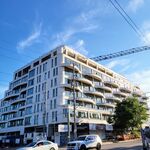BurlOak
Senior Member
Building an LRT under the existing LRT seems like a huge cost more no real benefit (many would consider it a downgrade - as it would no doubt lose stops.How about an underground Transit City line where the interchange station is located in that long corridor to connect with both lines 1 and 2 at either ends. And interchange with the new Rail Deck Park station as well
I'd like to get closer to downtown than Spadina as well. I tried to retain the existing Spadina Station, but reducing the curvature to veer more slowly away from Spadina and meet up with Hoskin. This would create a station in the heart of U of T. It would then curve through Queen Park and down Elizabeth. At City Hall, it makes a slight jog to York St.
Remember, the purpose here is just to allow for the Yonge-Bloor interline to return. This is a 4.5km extension which (basically) does not lose any destinations for those who came down from Yorkdale ways.
- Spadina Station would be a bit of a long transfer - but with the moving sidewalk restored it will hopefully be accepted.
- Heart House Station would nicely serve U of T better than any existing stop does.
- College Station could connect to Queens Park and Sick Kids.
- City Hall Station would be at Dundas and just north of the towers.
- Queen Station would be mostly south of Queen - with connection to the Ontario Line.
- King Station would be mostly south of King. (some type of pedestrian tunnel, and/or PATH signing would connect this new line to the current University Line).
- Union Station would basically under the tracks, maybe skewed a bit south, and would slightly more convenient to reach ACC and SkyDome.





